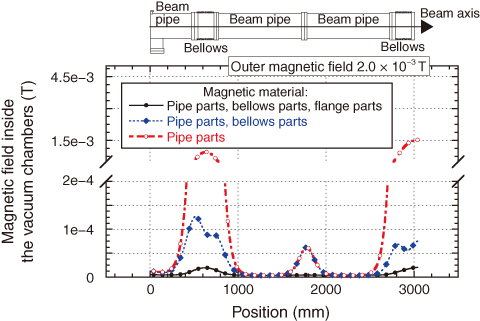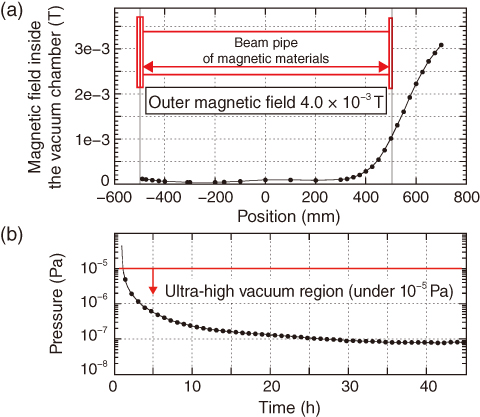
Fig.5-41 Location of the vacuum chambers of magnetic materials in the 3 GeV synchrotron at J-PARC

Fig.5-42 Calculated magnetic field inside the vacuum chambers, assuming that each component of the vacuum chambers is constructed from magnetic materials

Fig.5-43 Measured magnetic shielding performance and vacuum performance of the vacuum chamber
A main source of beam loss in synchrotrons is beam orbit distortion, caused by the entry of unwanted stray magnetic fields from the magnets at a nearby beam line. In the J-PARC 3 GeV synchrotron, a magnet along the beam extraction line injected a ∼10−3 T stray magnetic field into the vacuum chambers, distorting the beam orbit by approximately 10 mm from the chamber center. Stray magnetic fields are most effectively shielded by completely surrounding the beam region with magnetic material. Therefore, we decided to manufacture the vacuum chambers of magnetic materials. The developed vacuum chambers demonstrate superior magnetic shielding and vacuum performances.
Fig.5-41 shows the layout of the extraction section of the synchrotron, where the vacuum chambers of magnetic materials are installed. According to the beam orbit calculation, the external magnetic field should be suppressed to less than one-tenth in this beam region. Fig.5-42 shows the calculated magnetic field, assuming that each component of the vacuum chambers is constructed from magnetic materials. To ensure effective shielding, all the components, including the bellows, flange, and pipe parts, should be made from magnetic materials. To this end, permalloy and ferritic stainless steel were selected for the thin (pipes and bellows) and thick (flanges) parts, respectively.
Machining generates internal stress, which generally reduces the magnetic permeability of a material. However, magnetic permeability can be recovered by annealing. On the other hand, to reduce outgassing, vacuum materials are baked at high temperature under high-vacuum conditions. To achieve magnetic annealing while reducing the outgassing, we heat-treated the vacuum chambers under high vacuum. Fig.5-43 shows the magnetic shielding and vacuum performances. The external magnetic field was suppressed to less than one-tenth inside the chamber, and the magnetic materials ensured ultra-high vacuum. By constructing the vacuum chambers of magnetic materials, we can realize superior magnetic shielding and vacuum performances and a stable beam orbit within the synchrotron.